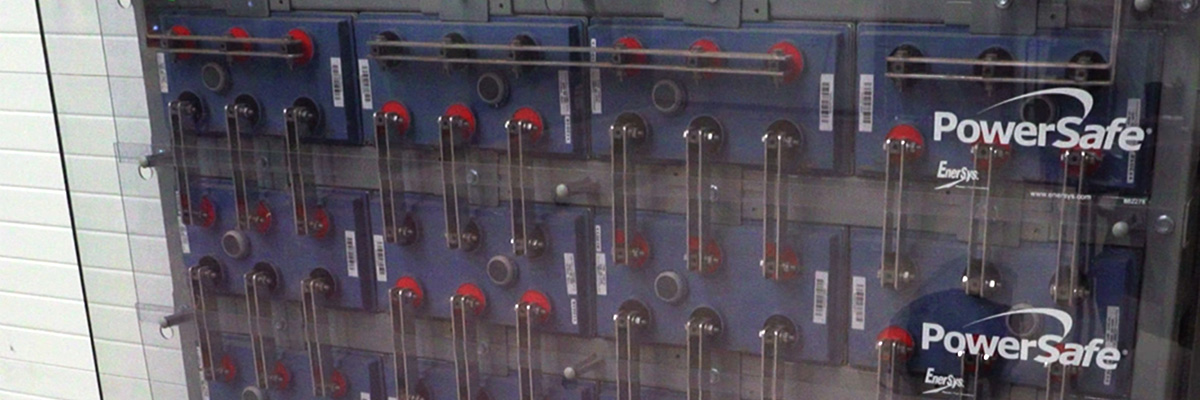Energy Storage & Utilization

“Significant advances in materials and devices are needed to realize the potential of energy storage technologies. Current largescale energy storage systems are both electrochemically based (e.g., advanced lead-carbon batteries, lithium-ion batteries, sodium-based batteries, flow batteries, and electrochemical capacitors) and kinetic-energy-based (e.g., compressed-air energy storage and high-speed flywheels).Electric power industry experts and device developers have identified areas in which near-term investment could lead to substantial progress in these technologies. Deploying existing advanced energy storage technologies in the near term can further capitalize on these investments by creating the regulatory processes and market structures for ongoing growth in this sector. At the same time, a long-term focus on the research and development of advanced materials and devices will lead to new, more cost-effective, efficient, and reliable products with the potential to transform the electric grid.”
Advanced Materials and Devices for Stationary Electrical Energy Storage Applications
Strengths
At Texas Tech, Research in Materials & Devices includes:
- Semiconductors and materials that are critical components for the improvement of energy systems.
- Silicon Carbide, GaN, silicon, high voltage, failure analysis, thermal design, and packaging
- Modules
- Power Electronics,
- Power semiconductor devices
- Power electronics
- Failure analysis
- Microelectromechanical Systems (MEMS)
- Nanocoatings
- Electrochemical energy conversion and storage (e.g., batteries, fuel cells, hydrogen production)
- Battery systems
- Electrified vehicles (automotive, aerial, etc.)
- Renewable Energy Systems
- Li-ion battery systems
- Oil drilling systems
- Fuel cells based on the oxidation of hydrogen supply electricity for space exploration, and methanol-powered fuel cells are investigated for use in commercial power generation and electric vehicles, Pt-based, metal crystallites for use as fuel cell catalysts
- Electronic structure and classical atomistic material simulations
- Semiconductors and dielectrics
- Light emitting and laser diodes
- Photodetectors, solar cells, and FETs
- Epitaxial growth and semiconductor processing
- Design and fabrication of nano- and micro- electronic and photonic devices
Infrastructure & Facilities
- Global Laboratory for Energy Asset Management & Manufacturing (GLEAMM): GLEAMM was established thanks to a $13 million investment by the State of Texas. Texas Tech, in partnership with Group NIRE, will leverage this investment to test, certify, research, develop and support the manufacturing of new electrical grid technologies and next-generation power electronic devices for public and private partners. Much of this testing and certification will take place at the Reese Technology Center, a shared field-testing site between Texas Tech and Group NIRE, located just west of Lubbock, Texas. GLEAMM works closely with X-Fab, Texas on silicon carbide semiconductor manufacturing, Monolith Semiconductors on silicon carbide design and National Instruments on smart microgrid and distributed generation technologies and systems.
- Center for Pulsed Power & Power Electronics (P3) has three primary research areas: Plasma, Pulsed Power, and Power Electronics.
- Chemical & Electrochemical Technology and Innovation Laboratory: The CETI-LAB was established by Prof. Gerardine (Gerri) Botte in August of 2019 when she joined the Chemical Engineering Department at Texas Tech University as Professor and the Whitacre Department Chair in Chemical Engineering. CETI's mission is to integrate electrochemical engineering technology and fundamentals into chemical and biochemical processes to enable sustainable and distributed manufacturing of chemicals and materials, process intensification, energy/air/water sustainability, technologies for deep space exploration, and biomedical devices.
- MEMS Lab at Texas Tech has research projects including the following: Solar Powered Digital Classroom in a Box, Integrative E-Learning Course partnering with the Texas Tech Burkhart Center for Autism Education & Research, and Class on a Chip, which is a state of the art, user friendly way to access the microscopic world.
- Nano Tech Center: Texas Tech is committed to carrying out state-of-the-art research in nanotechnology. Areas of interest include fundamental science and growth of advanced semiconductor materials for optoelectonics and CMOS applications, design, fabrication, characterization and implementation of MEMS, THz, metamaterials, plasmonics, functional materials, nanostructures, and integrated photonics.
- Center for Nanophotonics: The Center for Nanophotonics conducts research and development on manipulation of photons-electrons in nano-scale materials for innovative photonic devices and emerging technologies. The Center's research areas cover a broad spectrum, ranging from basic to applied, and dealing with state-of-the-art nano-scale material synthesis, fundamental physics, device fabrication and testing. In particular, our research is dedicated to the advancement of III-nitride wide bandgap semiconductors (BN, GaN, AlN, AlGaN, InGaN, and InAlGaN). These materials have contributed on the grandest scale to many technological advances including UV/blue/green/white LEDs, solidstate lighting, UV/blue/green laser diodes, UV/visible detectors, and high temperature/power transistors.
- Materials Characterization Centers designed to support a complete range of materials studies, including synthesis, analytical characterization, and applications testing. This lab contains the following types of equipment: X-ray Diffractometer (MiniFlex 6G), X-ray Diffractometer (SmartLab 3kW XE) , Field Emission Scanning Electron Microscope (FE-SEM), Transmission Electron Microscope (TEM), Focused Ion & Electron Beam (FIB) System, X-ray Photoelectron Spectrometer (XPS), Atomic Force Microscope (AFM), Fourier Transform Infrared (FTIR) Spectrometer/Infrared (IR) Microscope, Fourier Transform Raman Spectrometer/Fourier Transform Raman Microscope/Dispersive Raman Microscope Spectrometer, Spinning Disk Confocal System, Fourier Transform Infrared (FTIR) Spectrometer, UV-Vis Spectrometer, Thermogravimetric Analyzer (TGA), Differential Scanning Calorimeter (DSC), Particle Size Analyzer (Zetatrac), Particle Size Analyzer (API Aerosizer), Micropore Analyzer (ASiQ), Particle Charge Mapping System (Stabino)
- Characterization/Modeling/Failure Analysis of Devices
- External Relationships (e.g., Army Research Lab, X-Fab)
Texas Tech University Energy Institute
-
Address
3311 18th Street, Lubbock, Texas 79409-0004 -
Phone
806-834-3178 -
Email
william.keffer@ttu.edu
